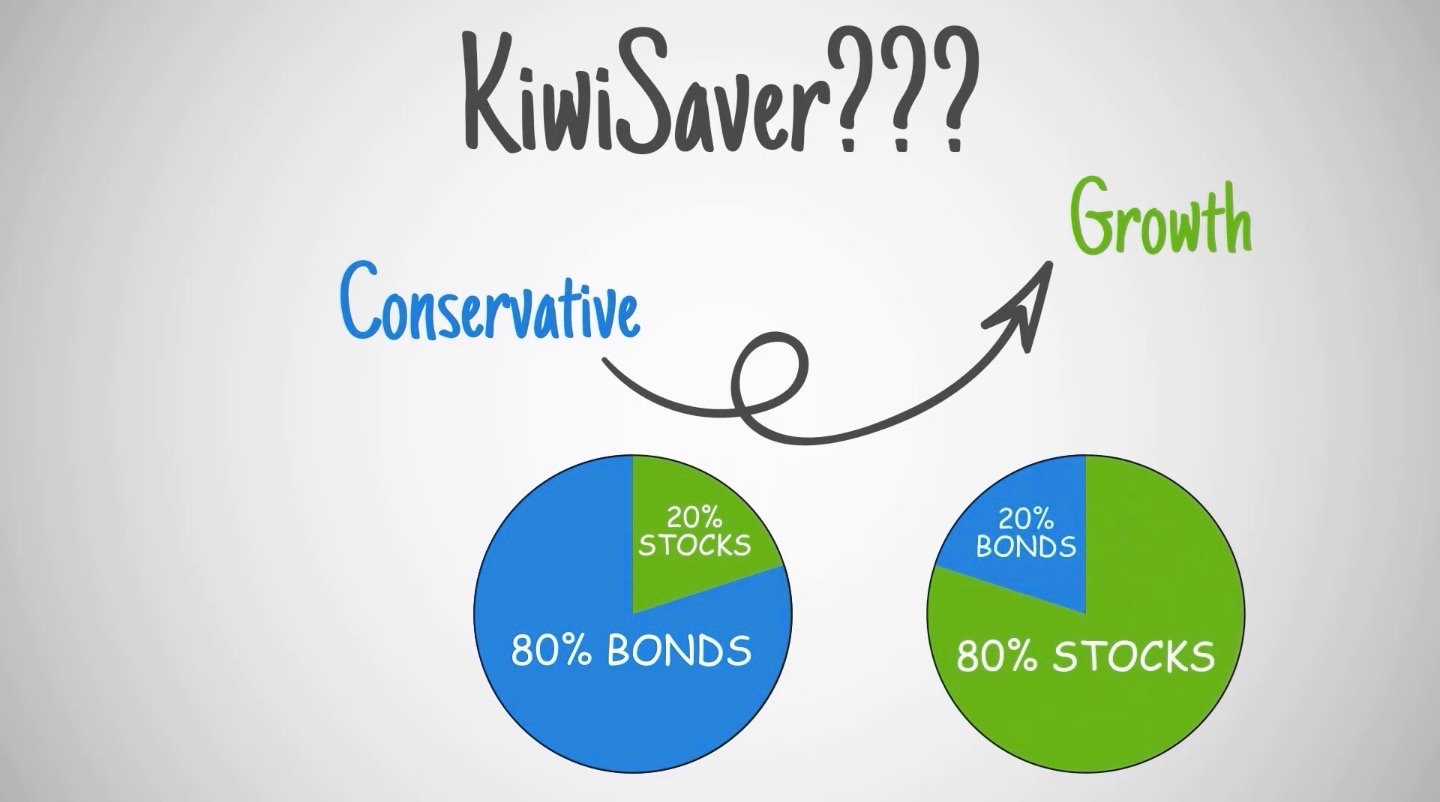We talk a lot about finding a KiwiSaver fund that suits you and your needs. What types of KiwiSaver funds are out there? And why is it so important to select a KiwiSaver fund that is suited to your situation?
KiwiSaver 101
KiwiSaver is an easy and affordable way to help you save extra money for retirement or for your first home. To get the most out of your KiwiSaver account, we need to understand where and how your savings are invested.
Most KiwiSaver providers offer a variety of investment funds. Generally, these fund types can be categorised into Cash, Conservative, Balanced, Growth, and Aggressive funds.
Although there are many aspects in how investment funds differ, KiwiSaver funds can be compared using these two main categories: the risk and return of the fund and the fees it charges.
Risk and Return
The difference in KiwiSaver funds is in the type of investments they invest in. These different types of investments broadly fall into stocks and bonds. Stocks are riskier investments with higher overall returns whereas bonds are less risky but have lower overall returns.
Click here to watch our video explaining what stocks and bonds are and how this applies to your KiwiSaver fund type.
The level of risk a KiwiSaver fund has is determined by the proportion invested in growth assets such as stocks, in comparison to the proportion invested in income assets such as bonds.
Growth assets are types of investments such as shares and property. These investments have the potential for higher returns over the long run, but also higher risk as they have the potential for greater changes in value.
Growth and Aggressive KiwiSaver funds have a greater proportion invested in growth assets compared to more Conservative KiwiSaver funds.
It is also important to note that the higher proportion invested in growth assets means there will be greater ups and downs in value, with these investments more likely to produce negative returns in any year.
The table below shows the types of KiwiSaver funds and how they compare in terms of risk and typical percentage invested in growth assets.
|
Type of Fund |
Risk |
Percentage invested in growth assets |
|
Cash |
Low risk |
0 - 9.9% |
|
Conservative |
Low to medium risk |
10 - 34.9% |
|
Balanced |
Medium risk |
35 - 62.9% |
|
Growth |
Medium to high risk |
63 - 89.9% |
|
Aggressive |
High risk |
90 - 100% |
(Source: Sorted)
Fees
KiwiSaver fees to the provider go towards the investment, management, and administration costs related to running the KiwiSaver scheme.
Different KiwiSaver funds charge different fees based on how actively or passively the investments are managed. Higher fees may be the result of more actively managed funds which can sometimes lead to higher returns.
When comparing fees, we should be asking questions like what am I getting for my money? Is the provider doing more to manage the fund and getting better results?
More than just past performance and fees
Various factors such as the amount of money required to achieve your goals, your time frame and your tolerance and capacity for the ups and downs of the stock market should be taken into account when choosing your KiwiSaver fund.
Moreover, no one can predict the future, this means we cannot rely solely on the past performance of a fund as an indicator of future success. Continuous monitoring of the performance of KiwiSaver funds as well as research on market trends is vital.
But you don't have to do this alone. National Capital specialises in KiwiSaver and Investment research and is here to help you figure out the right type of KiwiSaver fund for you, so you can have one less money worry. Start here by completing our KiwiSaver HealthCheck.




